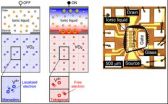(Press-News.org) Scientists led by the President of The University of Manchester have demonstrated a drug which can dramatically limit the amount of brain damage in stroke patients.
Professor Dame Nancy Rothwell, Professor Stuart Allan and their team have spent the last 20 years investigating how to reduce damage to the brain following a stroke.
They have been testing the effectiveness of the drug Anakinra (IL-1Ra), which is already used for rheumatoid arthritis in experimental studies of stroke.
This new study builds on previous research, although the big difference is that rats with stroke risk factors such as obesity, insulin resistance and atherosclerosis were used alongside healthy rats and older ones. It means the findings have a far greater chance of being replicated in human stroke patients.
Researchers induced a stroke in the rats and the drug IL-1Ra, or a placebo for comparison, was injected under the skin. The researchers did not know which animals had been given which drug. This is a similar process to what happens in clinical trials of medicines.
The results were startling. MRI scans revealed that the rats that were given IL-1Ra up to three hours after the stroke had only about half the brain damage of the placebo group.
Professor Rothwell said: "This is the first time that we are aware of a potential new treatment for stroke being tested in animals with the same sort of diseases and risk factors that most patients have. The results are very promising and we hope to undertake further clinical studies in stroke patients soon."
IL-1Ra works by blocking the naturally occurring protein interleukin 1. Researchers at The University of Manchester have identified that it is a key cause of brain injury following a stroke.
Interleukin 1 encourages inflammation in the area of the brain affected by stroke. This sends out signals to attract white blood cells and to switch on microglia cells in the brain. Because the barrier surrounding the brain has been weakened by the stroke the white blood cells find it easier to enter the brain. But instead of helping the inflamed area they actually kill nerve cells and worsen the injury. The increasing presence of these cells also explains why the damage in the brain gets worse over time following a stroke.
IL-1Ra also reduces the amount of damage to the blood-brain barrier following a stroke so the harmful cells can't enter the brain. In the recent experiments IL-1Ra reduced the damage to the blood-brain barrier by 55% in healthy rats and 45% in rats with underlying health conditions. In all types of rats the drug reduced the amount of activated microglia cells by 40% compared to the placebo group.
The only drug treatment currently available for stroke patients is Tissue Plasminogen Activator (tPA). However, this can only be administered to patients who suffer from a blood clot (ischaemic stroke) rather than bleeding. A brain scan is required to assess which type of stroke a patient has suffered which is why it is essential to get them to hospital as quickly as possible. tPA also has to be administered within a few hours of a stroke to be effective.
Professor Stuart Allan at The University of Manchester hopes that IL-1Ra could be used for both forms of stroke, meaning it could be administered immediately.
He said: "This drug has real potential to save lives and stop hundreds of thousands of people being seriously disabled by stroke. This really could be the treatment for stroke that we've been looking for over the past two decades."
A phase 2 trial with a small number of patients has yielded encouraging results. It's hoped a much larger clinical trial will demonstrate the effectiveness of IL-1Ra in reducing brain damage in stroke patients and that eventually it will become the standard treatment.
###
Notes to Editors
Stroke is the third most common cause of death and the leading cause of adult disability in the western world. More than 100,000 people have a stroke in the UK each year. Nearly a fifth of people still die within 30 days of diagnosis. Those who survive are often seriously disabled.
The most common cause of stroke is ischaemia (blood clot causing damage) whilst 15% of strokes are due to primary haemorrhage (direct bleeding into the brain). The induced stroke used in this study was an ischaemia.
The animals were randomized for all the experiments, assessments were performed in a blinded manner and analysis was confirmed by two independent researchers.
The research from these experiments was published in the Journal of Cerebral Blood Flow and Metabolism on the 11 July 2012.
Professor Stuart Allan is available for interviews and images can be obtained from the press office.
New stroke treatments becoming a reality
2012-07-26
ELSE PRESS RELEASES FROM THIS DATE:
Switching the state of matter
2012-07-26
Sixty years after the transistor began a technological revolution that transformed nearly every aspect of our daily lives, a new transistor brings innovations that may help to do so again. Developed at RIKEN, the device uses the electrostatic accumulation of electrical charge on the surface of a strongly-correlated material to trigger bulk switching of electronic state. Functional at room temperature and triggered by a potential of only 1 V, the switching mechanism provides a novel building block for ultra low power devices, non-volatile memory and optical switches based ...
A pulsar with a tremendous hiccup
2012-07-26
This press release is available in German.
Pulsars are superlative cosmic beacons. These compact neutron stars rotate about their axes many times per second, emitting radio waves and gamma radiation into space. Using ingenious data analysis methods, researchers from the Max Planck Institutes for Gravitational Physics and for Radio Astronomy, in an international collaboration, dug a very special gamma-ray pulsar out of data from the Fermi Gamma-ray Space Telescope. The pulsar J1838-0537 is radio-quiet, very young, and, during the observation period, experienced the strongest ...
New biomarker for common lung cancer predicts responses to chemotherapy
2012-07-26
Patients with the most common type of lung cancer are notoriously insensitive to chemotherapy drugs, including cisplatin. New findings related to the cellular pathways that regulate responses to cisplatin have now been published by Cell Press on July 26th in the journal Cell Reports. The findings reveal a potential biomarker that can be used to predict how these patients will respond to chemotherapy, as well as the patients' overall prognosis, paving the way for personalized treatment strategies.
Non-small cell lung cancer (NSCLC) is one of the leading causes of cancer-related ...
Methane measurements at low level flight
2012-07-26
A team of scientists from the Alfred Wegener Institute for Polar and Marine Research in the Helmholtz Association (AWI) and the GFZ German Research Centre for Geosciences has just completed an airborne measurement campaign that allowed for the first time to measure large-scale methane emissions from the extensive Arctic permafrost landscapes. The study area extended from Barrow, the northernmost settlement on the American mainland, across the entire North Slope of Alaska, to the Mackenzie Delta in the Northwest Territories of Canada. The airborne measurements (Airborne ...
Unprecedented accuracy in locating brain electrical activity with new device
2012-07-26
Researchers at Aalto University in Finland have developed the world's first device designed for mapping the human brain that combines whole-head magnetoencephalography (MEG) and magnetic resonance imaging (MRI) technology. MEG measures the electrical function and MRI visualizes the structure of the brain. The merging of these two technologies will produce unprecedented accuracy in locating brain electrical activity non-invasively.
We expect that the new technology will improve the accuracy of brain mapping of patients with epilepsy. It may also improve the diagnosis of ...
DNA damage in roofers due to PAH exposure – possible cancer link
2012-07-26
Roofers and road construction workers who use hot asphalt are exposed to high levels of polycyclic aromatic hydrocarbons (PAHs). A University of Colorado Cancer Center study published this week in the British Medical Journal Open shows that roofers have higher PAH blood-levels after a shift than before and that these high levels of PAHs are linked with increased rates of DNA damage, and potentially with higher cancer risk.
"We've known for some time that roofers and road workers have higher cancer rates than the general population, but we also know roofers have a higher ...
Deadly E. coli strain decoded
2012-07-26
EAST LANSING, Mich. — The secret to the deadly 2011 E. coli outbreak in Germany has been decoded, thanks to research conducted at Michigan State University.
The deadliest E. coli outbreak ever, which caused 54 deaths and sickened more than 3,800 people, was traced to a particularly virulent strain that researchers had never seen in an outbreak before. In the current issue of the academic journal PLoS ONE, a team of researchers led by Shannon Manning, MSU molecular biologist and epidemiologist, suggests a way to potentially tame the killer bacteria.
The strain, E. coli ...
'Basarab' surname may not indicate direct relation to Vlad the Impaler
2012-07-26
WASHINGTON—A study by the Genographic Project has shown that not all individuals carrying the Romanian "Basarab" surname, the first dynasty of Wallachian kings that included the real-life Dracula, can be direct biological descendants of the Basarab dynasty.
The Basarab dynasty ruled Wallachia, the historical and geographical southern region of present-day Romania, for almost three centuries (1330-1601) and had among its members Vlad III the Impaler, commonly known as Dracula. The ethnic origin of the Basarab family has long been a dispute among historians, with both an ...
Should high-dose interleukin-2 continue to be the treatment of choice for metastatic melanoma?
2012-07-26
New Rochelle, NY, July 26, 2012— Administering high-doses of interleukin-2 (IL-2) has been the preferred treatment for patients with stage IV metastatic melanoma. An article published in the current issue of Cancer Biotherapy and Radiopharmaceuticals, a peer-reviewed journal from Mary Ann Liebert, Inc. (http://www.liebertpub.com), explores whether or not this regimen is still the most effective. The article is available free online at the Cancer Biotherapy and Radiopharmaceuticals website (http://www.liebertpub.com/cbr).
In the article "Should High-Dose Interleukin-2 ...
Toddlers object when people break the rules
2012-07-26
We all know that, for the most part, it's wrong to kill other people, it's inappropriate to wear jeans to bed, and we shouldn't ignore people when they are talking to us. We know these things because we're bonded to others through social norms – we tend to do things the same way people around us do them and, most importantly, the way in which they expect us to do them.
Social norms act as the glue that helps to govern social institutions and hold humans societies together, but how do we acquire these norms in the first place?
In a new article published in the August ...



